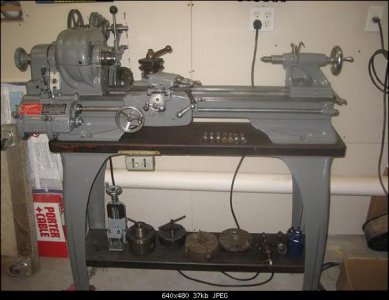- Joined
- Dec 13, 2012
- Messages
- 466
Gary, if I'm not mistaken, the make is "Strong". It's not a big name, I suppose, but it's a 10" that came with the lathe when I bought it new. It's never been off, and never wrecked. I'm beginning to see a little "spring" if I don't use the entire length of jaw, but I can just toss a piece of round stock in and I'm surprised if it's more than 0.0015 or so. I do use almost exclusively the marked primary pinion for tightening, and have pulled the jaws and solvent washed the scroll regularly, and kept it lubed. If I ever replace it, it will probably be a Buck 6 jaw Set-Tru, but I don't envision that any time soon. That chuck is about 15 years old now, I believe. I could probably touch it up with a TPG, but it is still plenty accurate for my work.
I am in no way putting down collets, and as I said, not trying to talk anyone out of going that route, but just pointing out some alternatives, and some of what I consider weak points that can easily be accommodated with soft jaws. Both have their places, and it comes down to what kind of work you want to do. Kind of in the same vein as the thread on what doesn't make you a machinist. Collets are not a cure-all or panacea for lathe workholding. And there are many things that you cannot do with them that you can easily do with a self centering chuck.
Tony, I'm sorry, but I think you took something I wrote, wrong. In fact I didn't read the other postings after my initial post. I just saw this back at the top of the list and remembered some other things that I liked about collets, hence may last post. Sorry for my misunderstanding.
Gary
Last edited:

